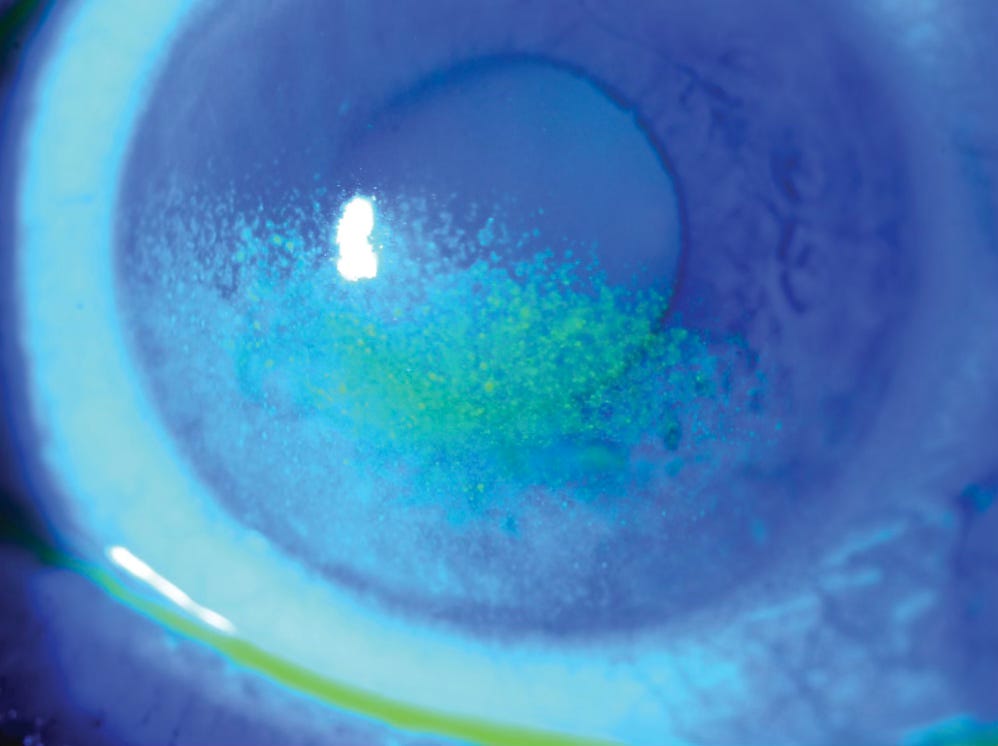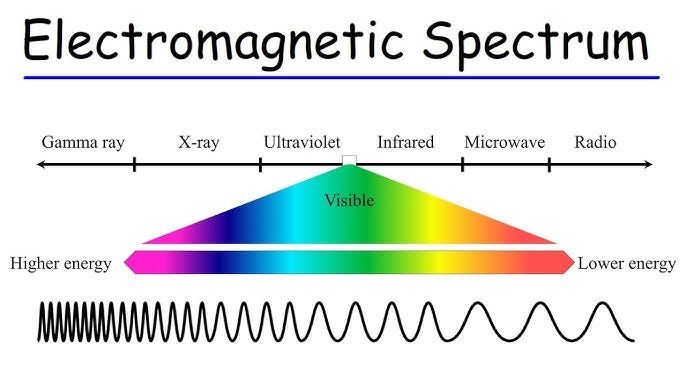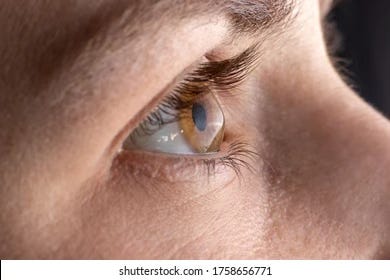The best explanation of Blue Light and its harmful effects
Should you buy blue-light-filtered lenses?
Blue Light is a topic that is discussed often. How many of us truly understand it?
I am going to break down the following concept into 3 big questions:
1. What is blue light?
2. How does it affect us?
3. How can we protect ourselves?
Special thanks to
for asking me to write about this!I love writing articles that I know you want to read. Suggest a topic to me, and I’ll be sure to write about it:
What is Blue Light?
We are surrounded by visible light (duh). This light may look white or yellow to you but, in reality, it exists in the form of a spectrum called the ‘visible spectrum’.
Light is a form of energy that is part of the electromagnetic spectrum. This spectrum is a human made way to arrange and understand the different types of radiation. This arrangement is according to wavelength, and frequency of the radiation.
As the radiation goes from Radio-waves towards Gamma rays, the wavelength reduces but the frequency of the wave increases. (right to left in the diagram below).
Somewhere in the middle of this rests the ‘visible’ radiation. These radiations are of a wavelength and oscillate at a frequency such that our eyes are able to see them.
Such as this:
All of the above is important to understand that Blue light is of a particular wavelength and frequency that gives it the visible blue colour.
What is also important to note in the above diagram is the Energy notation. As we travel from right to left on the spectrum, the energy of the radiation increases. This means that blue light which has a higher frequency than, say, yellow light is of higher energy.
Natural outdoor lighting has a good mixture of all the colours, but our indoor articifial lighting or smartphones and tablets do not. Devices such as mobile phones have a higher emittance of blue light than any other light.
Why? You may ask…
The way display screens work on computers, tablets, mobile phones or even television sets is fascinating.
Our eyes have cells called ‘cones’ sitting snuggly in the retina. The cones are responsible for receiving coloured light and sending signals onwards to the brain. They can make sense of light that enters the eye provided the light is blue, red, green, or a mixture of them. Technology has adapted to human biology by developing screens and displays that emit light in this colour range.
The screen is made of millions of tiny pixels that emit light based on the signal they receive. These pixels are designed to emit blue, red, or green light in different mixtures to make an image that our eyes can process. To make the most attractive-looking display with the widest range of colour possibilities- they must be able to emit blue, red, green, or its combinations.
Therefore, compared to the natural environment, our artificial screens emit tons of blue light.
So far, we have learnt-
1. What the electromagnetic spectrum is
2. Where does the blue light come from
3. Why our screens emit blue light in the first place.
How does blue light affect us?
The Eye
Our eyes are intricately designed organs. The back of the eye, called the retina is actually made of multiple layers, each layer consisting of a particular type of cell with a particular function. The cells in our retina that are designed to respond to light are called the rods, cones, and ganglion cells.
Research has shown that the higher energy blue light can cause photochemical damage to these cells by releasing reactive oxygen species which are harmful oxygen elements. We still don’t know the exact mechanism behind the damage, and evidence as of now does not show a harmful effect. The current studies show that the amount of exposure of blue light from screens to our retina is way below the harmful limit set by the International Commission for Non-Ionizing Radiation Protection.
One study found that the blue light spectral irradiance from tablets and smartphones set at maximum brightness ranges from 0.08 to 0.38% of the ICNIRP blue light exposure limit. In comparison, on a sunny day in June, the blue light exposure from viewing the sky in the United Kingdom is approximately 10.4% of ICNIRP's blue light exposure limit
-Ref: https://www.ncbi.nlm.nih.gov/pmc/articles/PMC9420367/
The retina is not the only part of the eye that is exposed to harm. Remember the cornea? I discussed it in last week’s article about corneal ulcers.
As a quick refresher, the cornea is the front-most part of the eye, made of completely see-through tissue that is the first to let the light in. Experimental studies on mice have shown that exposure of mice cornea to blue light has led to cellular death and oxidative damage. As a step further, human corneal cells were exposed to excessive blue light and demonstrated a similar result.
In living humans, the expression of these experimental findings is postulated to be in the form of inflammation of the cornea and worsening of dry eye disease.
In simple words, based on our experiments, we strongly suspect that high levels of exposure to blue light can leave your eyes feeling dry, irritated, and itchy, and can cause corneal surface disease.

The lens of our eye may also be affected. The crystalline lens situated just behind the cornea is the crux of light refraction in the eye. Without the lens, light that enters the eye would simply not reach the retina and we would not receive an image.
This lens is originally transparent but becomes opaque over time due to old age. This is known as cataracts.
The process of cataract formation can be accelerated for multiple reasons. One of them is exposure to lots of UV light. Those who work in the sun a lot, for example, get cataracts early.
UV light is a type of electromagnetic radiation that is very close to blue light on the spectrum. Therefore, we hypothesise early cataracts as a side effect of excessive blue light. However, this is yet to be determined scientifically.
If everything I have said so far has whooped across your head, remember this: As of today, the research does not show us that blue light has a directly harmful effect on visual performance. However, we need more studies investigating the long-term effects.
The Circadian Rhythm
We learnt about the circadian rhythm in an article about sleep I wrote a few weeks ago. If you would like to read it, click here.
Otherwise, here is a summary of what the circadian rhythm is:
The circadian rhythm
The circadian rhythm (CR) is the 24-hour clock in our body that primarily promotes alertness and sleepiness. The CR is important for sleep desire.
The CR controls this and although many factors influence it, one of the most important is light stimulus from the retina.
Light enters our eyes and hits the retina. This sends a signal to a nucleus in the brain called the suprachiasmatic nucleus (SCN). The SCN is also known as the circadian rhythm pacemaker.
The light stimuli reaching the SCN regulate the sleep or waking state of a person. More light entering the eye stimulates the SCN to promote wakefulness! Conversely, less light entering the eye means a higher chance of feeling sleepy.
This mechanism is especially sensitive to blue light.
Scientific studies have led to the conclusion that blue light exposure in the evenings affects the health of the circadian rhythm. It worsens sleep quality and makes it harder to fall asleep.
Is blue light really so bad?
Some studies have revealed positive effects of blue light which I did not know of, and surprised me!
MRI scans of people performing a particular task show that when exposed to blue light, their brain lights up far more compared to exposure to colours like violet. This shows us that blue light seems to stimulate cognitive function.
Blue-enriched light has also been shown to improve performance on tasks that require sustained attention, which we think is related to the promotion of alertness. Since blue light drives away sleepiness, it is useful in situations where you don’t want to be sleepy but want to be productive.
Some studies have even shown an improvement in memory. Those exposed to blue light emitting screens showed evidence of a better memory than those who used non-blue light screens.
All of the above explain why blue light experiements in classrooms and office spaces have shown a positive effect.
Students underwent teaching sessions followed by a test under blue light conditions. Their performace was better than their peers tested in non blue light classrooms. Office workers have also reported increased efficiency and a more positive mood while working in blue light conditions.
How do we protect ourselves?
So far, we have learnt that blue light has a theoretical basis for damage to certain functions of the eye. Evidence, however, shows that it affects our circadian rhythm.
The simplest solution is to avoid screens in the evening or at night. It’s important to remember that the effect of screens on sleep quality is seen after usage over time. So, those who stop using their screens at night will experience better sleep quality after staying away from them for a few days/ weeks.
In terms of blue light filtering glasses/ lenses- we don’t have evidence for its efficacy. Theoretically, it may be useful, especially if you want to put those glasses on for evening reading/ computer work. However, we have also seen that there are some beneficial effects of blue light. Is it wise to eliminate that? We don’t know yet!
Blue light protection eyeglasses
Current manufacturers are adding a yellow tint to spectacles to provide blue light protection. When I bought my new pair recently, I was offered a choice of lens (with the blue filtering lens being much more expensive).
What the manufacturers don’t tell you is that:
1. There are hardly any studies that investigate the efficacy of the blue light filter on spectacles
2. Of the studies that have been done, most are not robust scientifically.
3. Most results show that there is no added benefit of a blue light filter.
To Conclude…
Today, we have read about the electromagnetic spectrum, and where the “blue light” comes from. We learnt about the eye, and how blue light may theoretically affect it. We also investigated the circadian rhythm and discussed the evidence we have that shows blue light’s negative effect on sleep. Finally, we closed off by discussing some protection methods, and by clarifying some “myths”.
Happy Reading :)







Wonderful article. Quite helpful and informative.